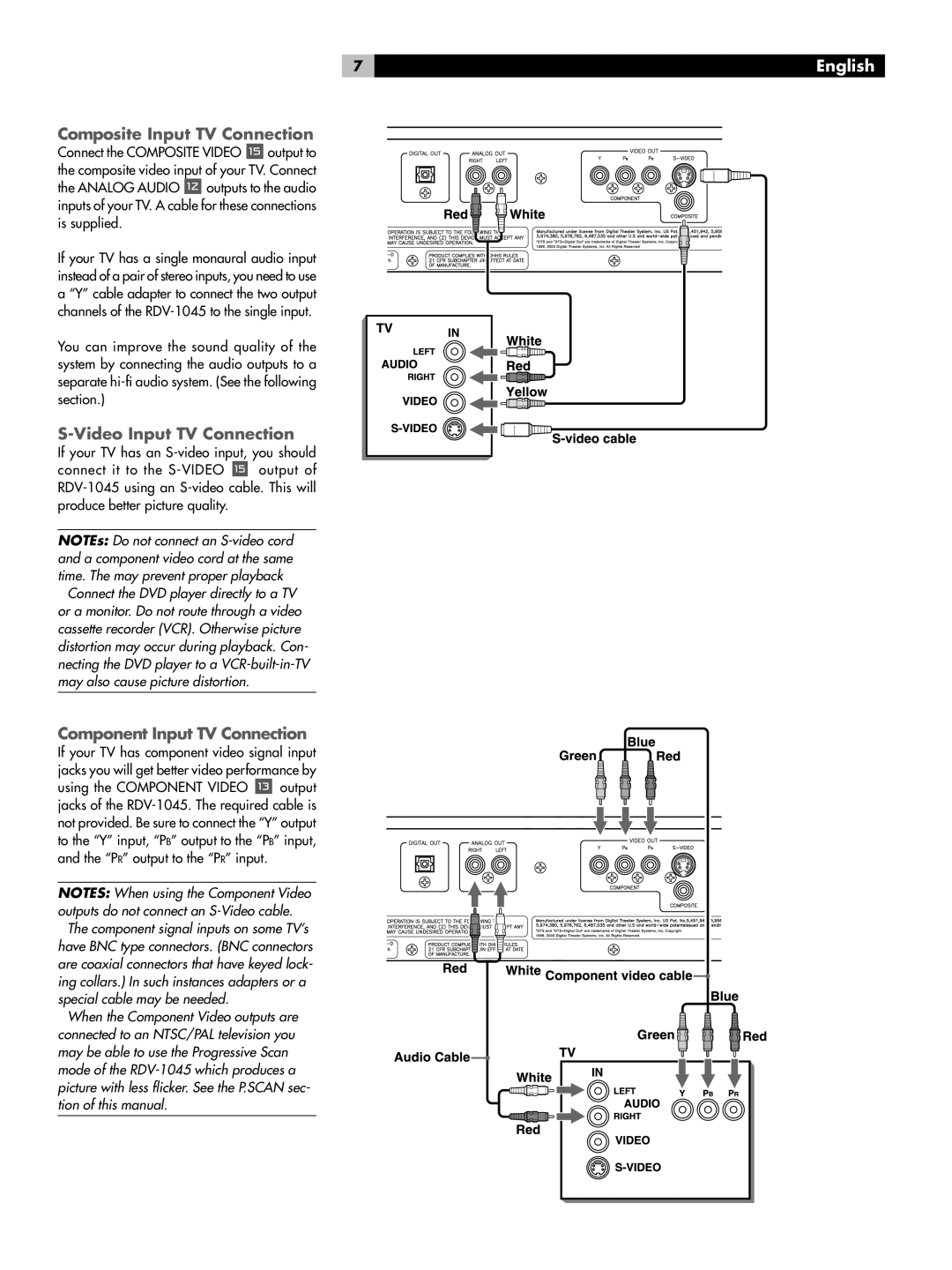
7 | English |
Composite Input TV Connection
Connect the COMPOSITE VIDEO eoutput to the composite video input of your TV. Connect the ANALOG AUDIO =outputs to the audio inputs of your TV. A cable for these connections is supplied.
If your TV has a single monaural audio input instead of a pair of stereo inputs, you need to use a “Y” cable adapter to connect the two output channels of the
You can improve the sound quality of the system by connecting the audio outputs to a separate
S-Video Input TV Connection
If your TV has an
NOTEs: Do not connect an
may also cause picture distortion.
Component Input TV Connection
If your TV has component video signal input jacks you will get better video performance by using the COMPONENT VIDEO q output jacks of the
NOTES: When using the Component Video outputs do not connect an
The component signal inputs on some TV’s have BNC type connectors. (BNC connectors are coaxial connectors that have keyed lock- ing collars.) In such instances adapters or a special cable may be needed.
When the Component Video outputs are connected to an NTSC/PAL television you may be able to use the Progressive Scan mode of the
